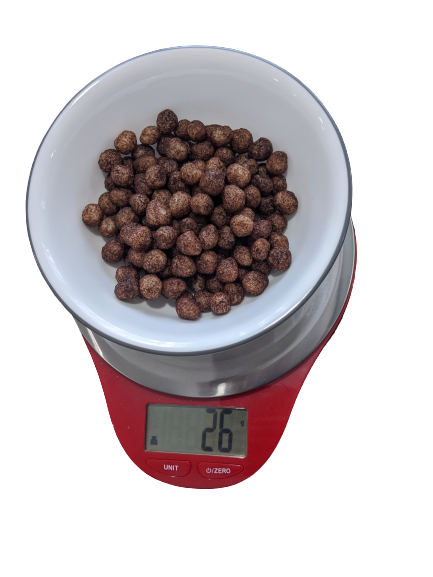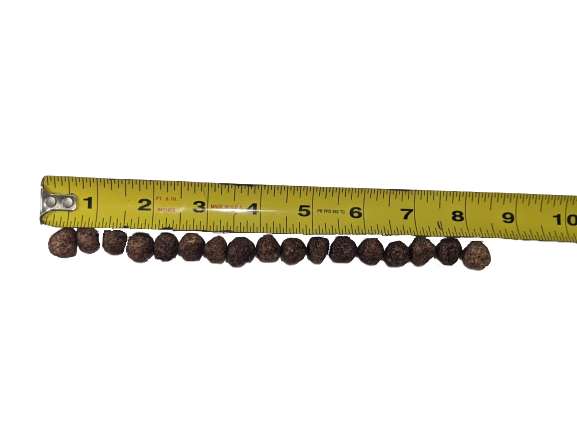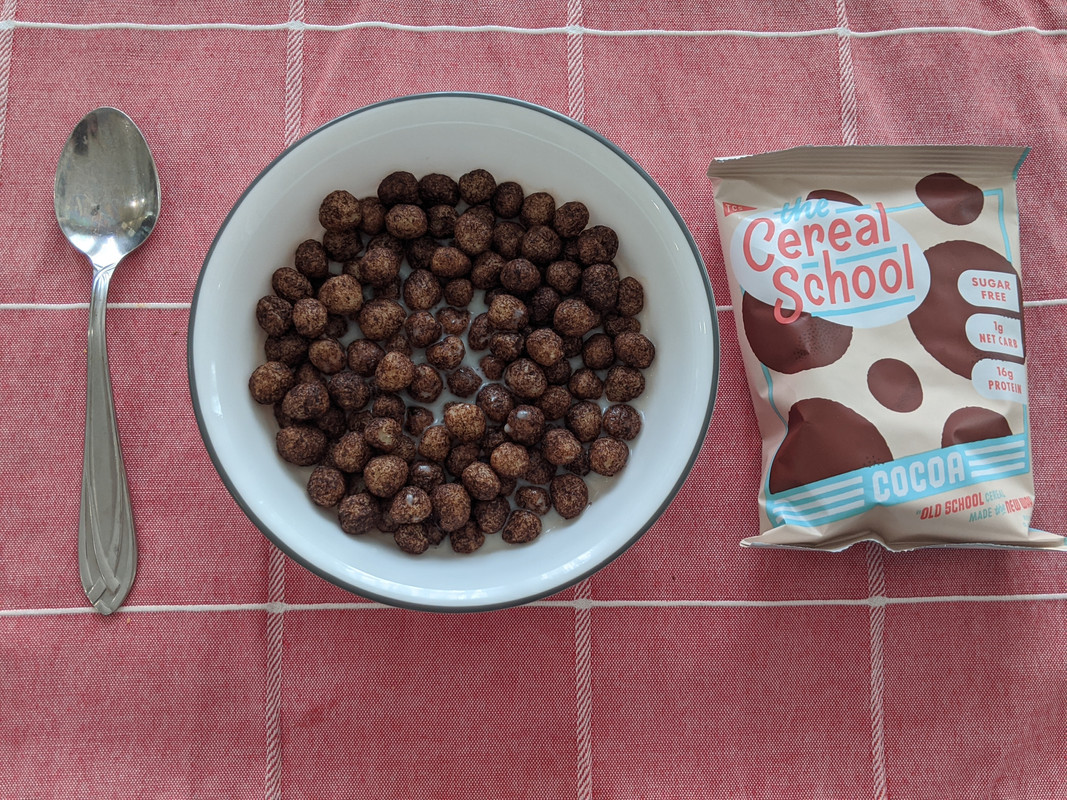Cereal is one of those foods that many of us grew up eating for breakfast on the regular. Cereal was always a cheap option and preferable to expensive and time-consuming breakfasts. As with most convenient things, these benefits come at a cost: the nutritional value. In today's world, most of the cereals you will find in your local store's dedicated cereal aisle will be filled with sugar and endless processed ingredients. Worst of all, many of these companies target kids to eat their cereals.
Schoolyard Snacks, formerly known as The Cereal School, are one of the few companies trying to bring healthier cereals to market. As a peanut butter lover, I needed to try their peanut butter cereal. I noticed they had a cocoa flavor too, so I decided to get both to make some kind of chocolate peanut butter combination. In this post, I will go into a deeply detailed review of both of these flavors. I will start with the taste of the cereals individually, then I will dig into the details around the ingredients these cereals have inside them and their overall macronutrients.
Taste and sensation
Peanut butter cereal:
Cocoa cereal:
Do you want the good news or the bad news first? The cocoa flavored cereal needs a new recipe, because right now the cocoa tastes like you are chomping on some chocolate flavored whey protein powder. Upon first bite, you get an initial burst of chocolate flavor that wanes into a dry protein taste. You start at Cocoa Puffs but end at plain chocolate protein shake. Because of this protein taste, some consumers report a "chemical" taste to the cereal, especially those that aren't used to the flavors of whey protein. The reality is that the protein isn't blending in with the flavors quite right. Also, this cereal is relatively clean; we will discuss this in the ingredients.
The peanut butter cereal is bomb. The taste was like a Reese's Puffs peanut butter cereal. It gives me the peanut butter fix I need while on a low-carb diet. I could still tell there was protein in the cereal, but I found that this company did well at blending the protein flavor into the peanut butter flavor. At first bite I needed to take another look at the ingredients to ensure they were as clean as I thought they were.
I have some tips to make this cereal taste better. One, Schoolyard Snakes has recipes that you can try. Personally, I have not tried any of their recipes because I ate all of my cereal in two weeks. Second tip, let the cereal soak in your milk. I use non-sweetened almond milk and put two bags into the bowl. After that, I let the cereal soak for a few moments to absorb some milk; "hydrating" the dry cereal. This is a technique I use for large-pieced, dry cereal such as Cocoa Puffs or shredded wheat.
The Product


In each bag you will receive around 100 pieces of their cereal, which are about 1/2 inch in diameter on average. While this is a lot of cereal, it still doesn't beat traditional cereals in terms of price per amount. Being an amazon affiliate, I am not permitted to write the actual price of the cereal, but just know it is more expensive than that of traditional cereals when compared to volume. For me, the nutritional value of this cereal outweighs the price.
The reason I am recommending amazon is not only because I am an affiliate. If you buy directly through their website, get ready for some aggressive/annoying marketing emails. I still receive constant emails today around their products and general news which I now throw in my spam folder. Before I received my cereal I received 2 emails from each founder which were worded in a way that seemed personalized for me, but likely automated.
The Nutrient Label
I am in love with the macros for this cereal - 16 grams protein at only 100 calories is INSANE for how good this cereal tastes. The calorie to protein ratio is far better than your average protein bar. Also, you get a lot in a single serving size so this is also great for calorie counters and volumetric diets. In my peanut butter cereal, I counted in a single bag 95 little puffs of peanut butter, so it comes out to about 1 calorie to 1 puff. That’s incredible!
The advertised 1g net carbs makes this product keto-friendly. The sweetener used in this product is allulose which has a low glycemic index and is about 70% sweet as the refined sugar we grew up with. I will talk more about this sweetener in the next section.
Ingredients
Milk Protein Isolate
Approximately 80% casein protein and 20% whey protein; this protein has a complete amino acid profile. These are similar proteins found in fresh milk, minus the lactose.
Allulose
The new sweetener on the block. This is a rare monosaccharide sweetener that's naturally found in wheat, figs and raisins. Allulose is 1/10 the calories of sugar and there have been promising studies that are suggesting effects such as lower glucose and fat loss. There still needs to be more long-term studies on this sweetener, but scientifically speaking from the given studies we have, this is a top choice compared to the alternatives.
Monk Fruit Sweetener
A zero-calorie sweetener which, unlike most sweeteners, gets its sweetness from mogosides (antioxidants). It is made by pulverizing seeds from monk fruit into juice that gets dried into a powder.
Cocoa(cocoa cereal only)
Always a fan of cocoa/cocao products, they are less processed and healthier. Read more at the Wiley Online Library.
Vanilla Bean
Vanilla beans are fruits (yes, beans are fruits) that are typically harvested from a plant called Vanilla planifolia. This is a clean and well-studied ingredient. There have even been studies linked to health benefits such as (inflammation reduction)[https://europepmc.org/article/med/1428053].
Tapioca Fiber
I sent Schoolyard Snacks an email asking about this one, I will update this when I get more information. This ingredient is shrouded in mystery throughout the web. There is not enough research around this prebiotic fiber, at least explicitly as an ingredient. Some products have linked tapioca fiber on their ingredients list to isomaltooligosaccharies (IMOs) which can spike glucose levels. IMOs are functional sweeteners and are commonly derived from enzymatic processing of starches (tapioca for example).
High-Oleic Sunflower Oil
High oleic oils are higher in monosaturated fats, which are better for your health than oils that are not high in oleic acid. We consider monounsaturated fats to be the "heart healthy" fats. That said, this oil was not expeller pressed nor cold pressed. This means it was extracted using the chemical solvent process. Personally, I do not mind eating these oils on occasion, but it is a choice you should be aware you are making.
Natural Flavor
A flavor that has been extracted from a plant or an animal. This can include a large array of foods. Quoting the FDA, this can be a spice, fruit or fruit juice, vegetable or vegetable juice, edible yeast, herb, bark, bud, root, leaf or similar plant material, meat, fish, poultry, eggs, dairy products, or fermentation products thereof. Basically, we cannot tell just from reading the label what is in this.
Summary
There are some bumps in the road with the ingredients of this cereal, but it is still far healthier than almost every other cereal on the market. The ingredients are competitive with other nutritional supplement-like foods as well. The macros are great: high protein and low calories.
